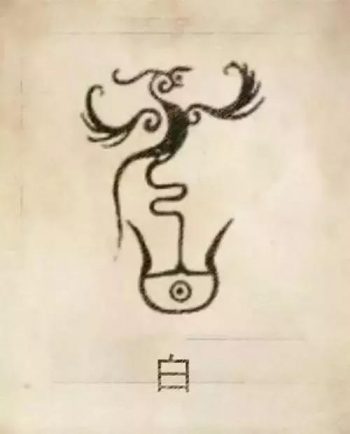The Bai(bái) surname is one of the long-standing surnames in Chinese history, with a diverse origin that blends the blood of the Han many ethnic groups, forming a unique cultural lineage. Let’s explore the story behind this iconic name.

Ⅰ、Origins of the Bai Surname
1. Royal Connections
From Zhou Dynasty Nobles: The earliest Bai lineage traces back to Bai Yibing, a Qin state general (7th century BCE) whose descendants adopted "Bai" as their surname. His relative, Bai Qi, became a legendary Warring States-era military strategist.
2. Chu Kingdom Legacy
Prince Xiong Sheng, grandson of King Ping of Chu, was granted the fiefdom "Bai" (modern Henan). His family became known as Bai Gong Sheng, forming the surname’s primary branch.
3. Mythical Beginnings
Ancient texts credit Bai Fu, an official under the mythical Emperor Yan (c. 2500 BCE), as an early namesake for his flood-control achievements.
4. Multicultural Blending
Over centuries, ethnic groups like the Turks, Hui Muslims, Manchus, and Mongols adopted "Bai" through intermarriage or cultural exchange. For example:
Yuan Dynasty official Chahan (Persian descent) took the name Bai Jing.
19th-century Hui Muslim leader Bai Yanhu later influenced Central Asian communities.
Ⅱ、Notable Figures
1. Military Legends
Bai Qi (3rd century BCE): Known as the "God of War," his victory at the Battle of Changping reshaped China’s unification under the Qin dynasty.
Bai Jian (6th century CE): A reformist statesman in the Northern Wei government.
2. Literary Giants
Bai Juyi (772–846 CE): Tang dynasty poet-activist whose works like Song of Eternal Sorrow blended social commentary with emotional depth.
Bai Xingjian:The younger brother of Bai Juyi, famous for the legendary novel "The Story of Li Wa," which pioneered a new style of Tangynasty classical Chinese fiction.
Bai Pu (1226–1306): A master of Yuan dynasty opera, famous for Rain on the Paulownia Tree.
3. Trailblazers in Science & Commerce
Bai Gui (4th century BCE): Pioneer of investment strategies like "buy low, sell high," revered as China’s "Father of Commerce."
Bai Ying (14th century CE): Engineered key sections of the Grand Canal, boosting imperial trade.
Ⅲ、Cultural Values
1. Moral symbol
The character "白" (Bái) means "white" or "pure," shaping the family’s identity:
Ethical Codes: Many Bai clans emphasize "clean governance and moral clarity" in their teachings. Bai Juyi’s family motto, "Cultivate virtue in solitude," highlights this ethos.
2. Ancestral Hubs:
Taiyuan (Shanxi): The Bai clan’s ancestral heartland.
Nanyang (Henan): Home to Bai Juyi’s memorial temple and ancient stone tablets.
3. Literary imagery
The surname Bai is deeply bound to poetry, with classic images such as "White Dew as Frost" from the of Songs and Li Bai's "A thousand years of white clouds", which imbue the surname with a romantic hue.
Ⅳ、Modern Influence:
1. Migration Patterns
Ming Dynasty (1368–1644): Bai families spread from Shanxi to Shandong and Hebei during the "Great Pagoda Tree Migration."
Modern Diaspora: Largest populations reside in Henan and Sichuan, with communities in Singapore, Malaysia, and the U.S.
2. Cross-Cultural Bridges
The Donggan people (Bai Yanhu’s descendants in Kyrgyzstan) preserve Qing-era dialects and customs.
Minority branches like the Baiyier clan (Oroqen ethnicity) showcase ethnic harmony in China.
3.Contemporary Contributions
Bai entrepreneurs and scholars excel in tech, medicine, and cultural preservation, proving ancient values thrive in modern times.
Why the Bai Story Matters
More than a family tree, the Bai surname embodies China’s ability to weave diverse threads—nomadic and agricultural, poetic and pragmatic—into a resilient cultural fabric. For readers, it’s a reminder that "white" isn’t just a color; it’s a 3,000-year-old promise to live with integrity.